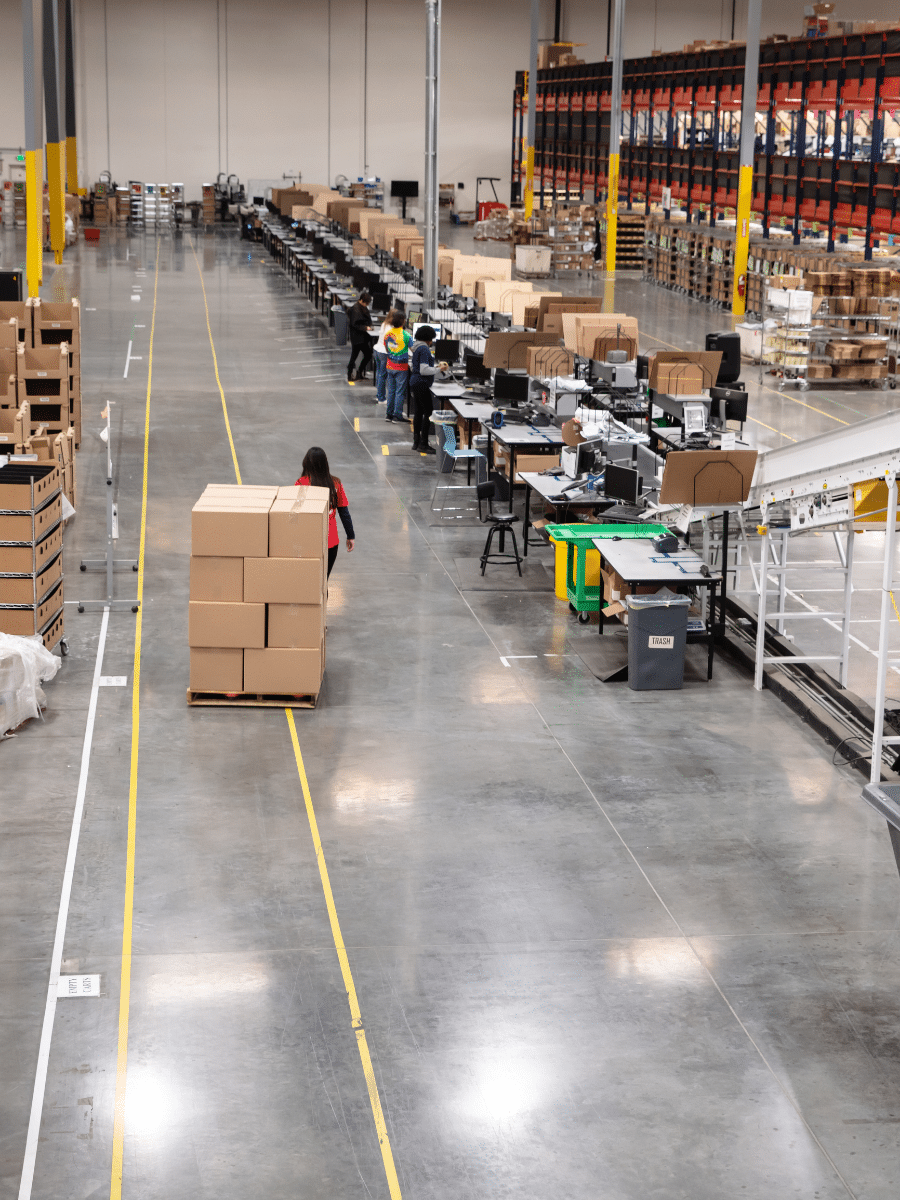Redesigning Warehousing for a Resilient Future
The warehouse industry operates much like a vibrant, bustling metropolis – intricate networks humming with activity, and each cog, lever, and wheel playing a crucial role in the grand symphony of logistics and supply chain management. Imagine this landscape being plunged into chaos by a sudden, unforeseen blackout – streets that were once ablaze with lights and bustling with activity, now in darkness and eerie silence.
This analogy mirrors the plight of the warehouse industry amidst the COVID-19 pandemic. Trade routes were blocked, supply chains disrupted, and warehouses were left scrambling to adapt to a landscape rapidly changing under the pandemic’s shadow. For those who had long assumed their operations to be rock-solid, the new challenges posed some serious questions: How can we ensure continuity of operations in the face of such disruptions? What strategies can we adopt to build resilience?
Emerging from the pandemic’s grip, resilience has morphed from an operational bonus to an absolute necessity. But building resilience isn’t just about going back to normal; it’s about adapting and preparing for the ‘new normal’, transforming challenges into opportunities, and disruptions into springboards for innovation. It’s about learning from the blackout and ensuring the lights stay on, no matter what.
So, how do we switch the lights back on and keep them illuminated? In this article, we delve into the blueprints of building resilience in warehouse operations. We’ll unpack key strategies such as diversifying suppliers, incorporating operational flexibility, and leveraging cutting-edge technology. Think of it as an adventurous expedition through the cityscape of warehousing, where we explore the power grids, adaptable infrastructures, and high-tech control centres of the future.
Are you ready to delve deeper into this dynamic metropolis and explore these intriguing strategies? Let’s don our city planner’s caps, and stride confidently into the post-pandemic era of warehouse operations.
The Power Grid: Diversifying Suppliers
In the world of energy, diversification is key. A city powered by a single plant risks complete blackout if an unexpected event disrupts its only source of power. The COVID-19 pandemic presented a similar challenge to the warehouse industry, revealing the vulnerabilities of relying heavily on a single supplier. Operations came to a standstill, stocks ran dry, and supply chains fractured. But how could this crisis have been mitigated? The answer is as clear as the city’s solution: Diversification.
By diversifying, a warehouse opens itself up to a network of suppliers. This network, much like multiple power plants supplying a city, ensures an uninterrupted flow of goods even if one supplier experiences a disruption. The benefits, however, extend beyond merely ensuring continuity. Diversification could potentially spark healthy competition amongst suppliers, leading to competitive pricing, improved product quality, and even inspiring innovation. But how can warehouses effectively manage relationships with multiple suppliers? And what are the steps to ensure smooth coordination between diverse suppliers? The exploration of diversification poses these stimulating questions that need thoughtful solutions.
Adapting to the Weather: Implementing Flexibility in Operations
Imagine a city built with rigid, unyielding structures. How well could it adapt to the onslaught of a storm, or adjust to changing weather conditions? A similar analogy can be drawn for the warehouse industry, where inflexible operations faced a significant challenge in the face of rapid market shifts instigated by the pandemic.
The path to weathering these storms lies in flexibility. Just as a city might benefit from adaptable infrastructure that can withstand a variety of conditions, warehouses that can swiftly adjust their inventory, modify workforce schedules, and pivot processes in response to market fluctuations find themselves in a more secure position. But flexibility isn’t just about quick reactions, it’s about anticipating change. Could cross-training employees to handle a range of tasks ensure a flexible workforce? Might demand prediction models help adjust inventory before a potential spike or dip? The quest for operational flexibility is like an uncharted map, teeming with potential solutions and opportunities waiting to be discovered.
Tomorrow’s Tech Today: Leveraging Technology
The metropolis of the future is seamlessly interwoven with cutting-edge technology. It serves as the underlying framework for every aspect of urban life, from commuting networks to health services. This state of affairs closely parallels the evolving narrative in the warehouse industry. As we journey deeper into the aftermath of the pandemic, technology has graduated from being a supplemental feature to a cornerstone in warehouse processes.
Innovative tools like AI-driven inventory management systems and autonomous delivery robots are revolutionising the warehouse environment. These tools, acting as the control centre of our future city, optimise operations, detect potential disruptions, and ensure seamless workflows. But technology doesn’t stop here; the rise of the Internet of Things (IoT) and blockchain present promising avenues for enhancing visibility, security, and efficiency in supply chains.
But how can warehouses ensure a smooth transition to these technologies? What are the possible obstacles, and how can they be overcome?
The exploration of technology’s role in the warehouse industry is like deciphering a complex blueprint, offering intriguing prospects for a more resilient future.
In conclusion, our journey through the cityscape of warehouse operations has shed light on the building blocks of resilience in a post-pandemic world. Diversifying suppliers is like connecting to multiple power plants, ensuring uninterrupted functioning. Flexibility is akin to a city that can reshape itself according to the weather, staying robust despite changing circumstances. Technology, meanwhile, is the cutting-edge control centre, driving progress and enabling smooth operations.
As we look to the horizon, it’s clear that the resilient warehouse of the future resembles a well-powered, adaptable, technologically advanced city. As we embrace this new blueprint, the question remains – are we ready to adapt and pioneer into the post-pandemic era? Only time will tell, but with these strategies in hand, we are certainly on the right path.
Let’s gear up and embark on this exciting journey to build a sturdier, more resilient warehouse industry.



